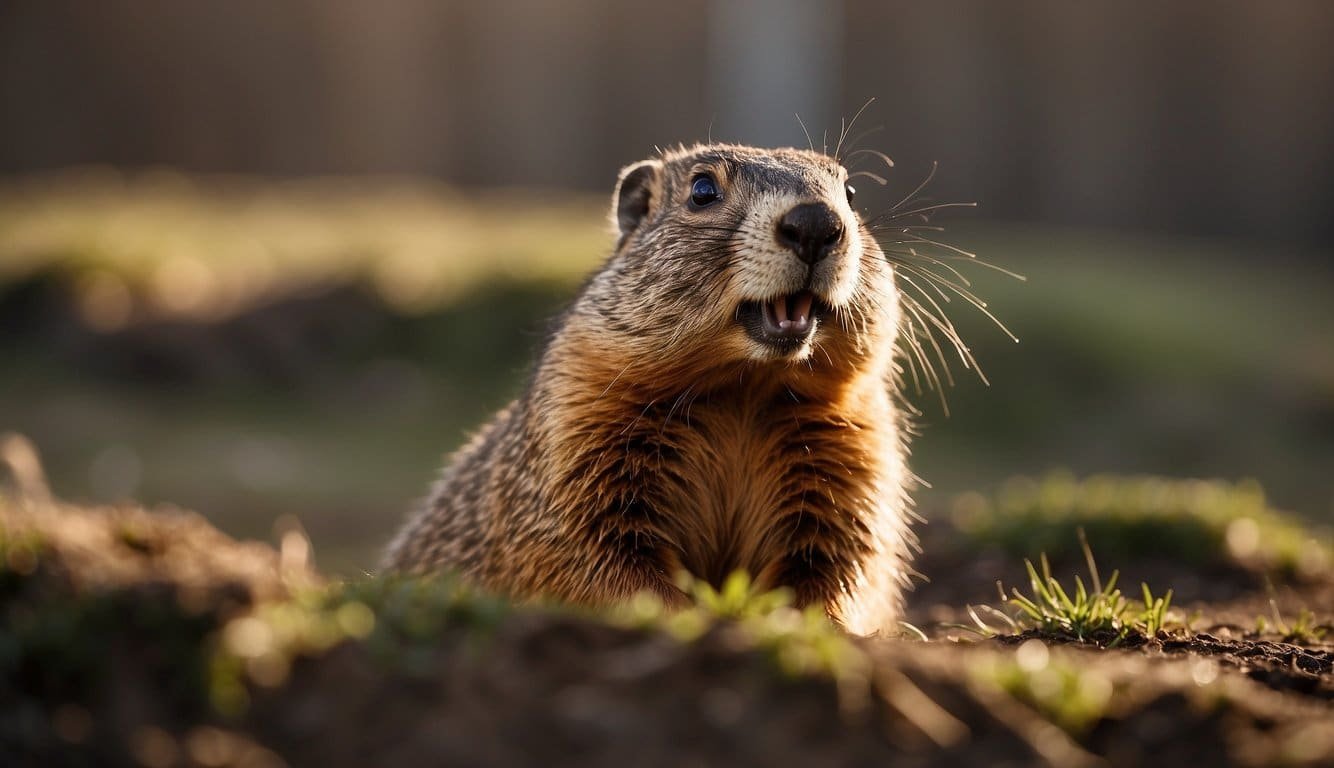Groundhog Basics

Groundhogs, also known as woodchucks or marmots, are fascinating creatures with unique adaptations that allow them to thrive in a variety of environments across North America.
Physical Characteristics
Groundhogs, scientifically referred to as Marmota monax, are members of the squirrel family. These stout creatures sport thick fur, which varies from gray-brown to reddish-brown, helping them blend into their natural surroundings. An adult groundhog’s size can be quite imposing, typically measuring 40 to 65 centimeters (16 to 26 inches) in length with a weight that can range from 2 to 6 kilograms (4.4 to 13.2 pounds). Their short, bushy tails, which add another 15 to 20 centimeters (6 to 8 inches) to their length, help them balance and communicate with fellow groundhogs.
Habitat and Distribution
The groundhog’s habitat is versatile, spanning across North America, from Canada to the United States, and they are even spotted as far as Alaska. They exhibit a preference for open fields and forests where they can easily dig. Groundhogs are true engineers of the animal kingdom, constructing intricate burrows and dens that can extend up to 14 meters (46 feet) in length, featuring multiple entrances and even escape routes to evade predators.
Hibernation and Survival
Hibernation is a remarkable feature of groundhog behavior. As winter approaches, groundhogs retreat to their dens for a long winter’s nap that can last up to six months. During this period, their body temperature, heart rate, and breathing slow down significantly, allowing them to survive on stored body fat. This dormancy is critical for their survival, as it helps them conserve energy when food is scarce. With the arrival of spring, groundhogs emerge from their winter slumber, often heralding the changing of seasons, which has led to the popular tradition of Groundhog Day.

